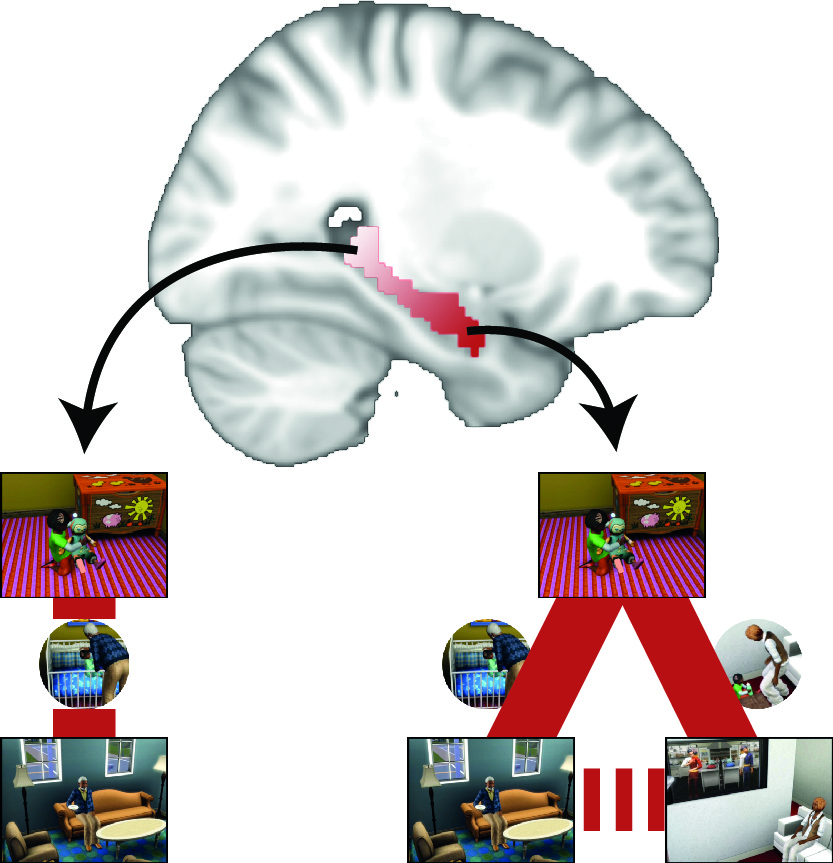In a new paper in Nature Neuroscience, we show that memories of the same events co-exist at different scales in the brain. To avoid interference, the different memory scales (coarse, medium and fine) are distributed across different parts of the hippocampus, with finest scale memories at the back and the coarser memories at the front.
We seem to remember our past at different resolutions: for example, last Friday we might remember going to work and then having drinks with friends. We might also remember more fine scale events which are entailed in going to work: leaving home, the commute, arriving at our desk. Or some of the very specific events like reading that email or realising that the coffee machine is broken. Neuroscientists at the Donders Institute at Radboud University in Nijmegen, The Netherlands, have now discovered that memories of the same events co-exist at different scales in the brain. “We showed participants life-like events created with the videogame TheSims3 that were integrated into multi-event narratives ”, says first author Silvy Collin. Participants watched these events while being in an MRI scanner. The results show that different memory scales (coarse, medium and fine) are distributed across different parts of the hippocampus – the part of the brain crucially involved in episodic memory – with finest scale memories at the back and the coarser memories at the front. Christian Doeller, who leads the team, adds: “Although we have discovered that these different resolutions are formed automatically, it seems plausible that different resolutions can co-exist independently to avoid interference. These findings have can have implications on how we educate in formal classroom settings but also how we develop memory aids for elderly or people with Alzheimer’s disease”.
For more information, see:
Collin SHP, Milivojevic B, Doeller CF (2015). Memory hierarchies map onto the hippocampal long axis in humans. Nature Neuroscience. 18(11): 1562–1566.
Abstract
Memories, similar to the internal representation of space, can be recalled at different resolutions ranging from detailed events to more comprehensive, multi-event narratives. Single-cell recordings in rodents have suggested that different spatial scales are represented as a gradient along the hippocampal axis. We found that a similar organization holds for human episodic memory: memory representations systematically vary in scale along the hippocampal long axis, which may enable the formation of mnemonic hierarchies
Research published in: Nature Neuroscience
Research conducted at: DoellerLab, Donders Institute; Radboud University
Research funded by: ERC; NWO



